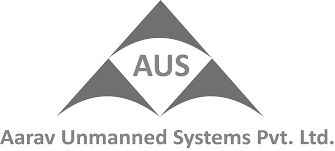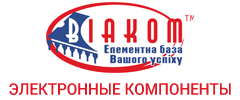Збирач потоків
Quintessent and IQE establish quantum dot laser & SOA epiwafer supply chain for AI optical interconnects
📰 Газета "Київський політехнік" № 3-4 за 2025 (.pdf)
Вийшов 3-4 номер газети "Київський політехнік" за 2025 рік
The Race to Net-Zero: Accelerating Efficiency & Renewables
The escalating global energy crisis, coupled with the urgent need to mitigate climate change, demands a radical shift in our energy consumption patterns. This necessitates a two-pronged approach: enhancing energy efficiency and transitioning to low-carbon emission sources. These two facets are not mutually exclusive but rather symbiotic, driving a virtuous cycle of sustainability.
In the era of climate change and environmental challenges, the twin goals of enhancing energy efficiency and reducing carbon emissions have become pivotal for global sustainability. As industries, governments, and researchers seek solutions to minimize ecological footprints, advancements in technology and policy innovations have opened new pathways toward achieving these goals. This article delves into the latest trends, strategies, and technologies in energy efficiency and low carbon emissions, shedding light on their implications for a sustainable future.
The Energy-Carbon NexusEnergy consumption is a primary contributor to greenhouse gas (GHG) emissions, particularly from sectors such as power generation, transportation, and manufacturing. According to the International Energy Agency (IEA), energy-related CO2 emissions account for nearly 75% of global GHG emissions. Tackling this issue requires a dual approach: improving energy efficiency to reduce consumption and transitioning to low-carbon energy sources.
Innovations Driving Energy Efficiency- Smart Grids and IoT Integration
Smart grids leverage Internet of Things (IoT) devices, sensors, and real-time analytics to optimize energy distribution and consumption. These grids enable demand response strategies, where electricity usage is adjusted based on supply conditions, reducing waste and enhancing grid stability. For instance, smart thermostats and lighting systems can significantly cut residential and commercial energy usage.
- Advanced Building Technologies
Buildings account for 40% of global energy consumption. Modern energy-efficient building materials, such as aerogels and phase-change materials, provide superior insulation and thermal regulation. Additionally, building automation systems (BAS) equipped with AI algorithms can optimize HVAC (heating, ventilation, and air conditioning) systems, further reducing energy needs.
- High-Efficiency Industrial Processes
Industrial processes are energy-intensive, but advancements in technologies like waste heat recovery, precision manufacturing, and energy-efficient motors have made significant progress. For example, deploying variable frequency drives (VFDs) in motor systems can reduce energy consumption by 30-50%.
- Electrification of End-Uses
The electrification of transportation, heating, and cooking—coupled with clean electricity—is a cornerstone of energy efficiency. Electric vehicles (EVs), heat pumps, and induction stoves consume less energy compared to their fossil fuel-based counterparts while eliminating direct emissions.
Decarbonizing the Energy SectorThe transition to low-carbon energy sources is critical for achieving global climate goals. Recent innovations are accelerating this shift:
- Renewable Energy Expansion
The deployment of solar, wind, and hydropower technologies has reached unprecedented levels. Innovations in photovoltaic (PV) materials, such as perovskite solar cells, promise higher efficiency and lower production costs. Offshore wind turbines with capacities exceeding 15 MW are now operational, significantly enhancing energy output.
- Green Hydrogen
Green hydrogen, produced via electrolysis powered by renewable energy, is emerging as a versatile solution for decarbonizing hard-to-abate sectors like steelmaking, aviation, and maritime transport. Recent advancements in electrolyzer efficiency and cost reduction have accelerated its adoption.
- Energy Storage Technologies
The intermittent nature of renewable energy necessitates robust storage solutions. Lithium-ion batteries dominate the market, but next-generation technologies such as solid-state batteries, redox flow batteries, and gravity-based storage systems are gaining traction. These innovations promise longer lifespans, higher energy densities, and reduced environmental impacts.
- Carbon Capture, Utilization, and Storage (CCUS)
CCUS technologies capture CO2 emissions from industrial and power generation processes, preventing them from entering the atmosphere. The captured CO2 can be utilized to produce synthetic fuels, chemicals, or building materials, creating a circular carbon economy. Companies like Climeworks and CarbonCure are pioneering such solutions.
Policy and Market DriversGovernments worldwide are implementing policies to incentivize energy efficiency and low-carbon technologies. Examples include:
- Carbon Pricing Mechanisms: Carbon taxes and cap-and-trade systems encourage industries to reduce emissions by assigning a cost to carbon pollution.
- Energy Efficiency Standards: Mandates for appliances, vehicles, and industrial equipment ensure a baseline level of efficiency.
- Renewable Energy Targets: Countries like India, Germany, and the United States have set ambitious goals for renewable energy capacity.
- Green Financing: Initiatives like green bonds and sustainability-linked loans provide capital for clean energy projects.
Despite progress, significant barriers remain. The high upfront costs of energy-efficient technologies and renewables can deter adoption, particularly in developing regions. Additionally, integrating high shares of renewables into the grid poses technical challenges related to stability and storage.
These challenges also offer opportunities for innovation and investment. Digital twins, for instance, enable virtual simulations of energy systems, optimizing design and operations. Artificial intelligence (AI) and machine learning (ML) are being harnessed to predict energy demand, optimize renewable integration, and enhance grid resilience.
Case Studies: Real-World Impacts- Singapore’s Green Building Initiative
Singapore has implemented stringent green building standards, leading to a 28% reduction in energy consumption per building. The city-state’s Green Mark certification incentivizes energy-efficient designs and retrofits, demonstrating the impact of policy-driven action.
- Tesla’s Energy Ecosystem
Tesla’s integrated approach—combining solar panels, battery storage, and EVs—offers a glimpse into a sustainable energy future. The company’s Gigafactories focus on scaling production while reducing costs, making clean energy solutions more accessible.
- Europe’s Offshore Wind Success
Europe’s offshore wind sector exemplifies the potential of renewable energy. Projects like Dogger Bank in the UK, set to be the world’s largest offshore wind farm, highlight advancements in turbine technology and supply chain efficiencies.
The Road AheadAchieving a sustainable, low-carbon future requires collective effort across sectors. Key priorities include:
- Scaling Innovation: Continued research and development are crucial to drive down costs and improve performance.
- Equitable Access: Ensuring that developing nations benefit from clean technologies and financing mechanisms is essential for global impact.
- Collaboration: Partnerships between governments, private sectors, and academia can accelerate deployment and knowledge sharing.
- Behavioral Change: Public awareness campaigns and incentives can encourage energy-saving behaviors and adoption of clean technologies.
Energy efficiency and low carbon emissions are not just environmental imperatives but also economic opportunities. By embracing cutting-edge technologies, fostering policy innovation, and promoting global collaboration, we can pave the way for a resilient and sustainable future. As we stand at the crossroads of energy transformation, the choices we make today will shape the world for generations to come.
The post The Race to Net-Zero: Accelerating Efficiency & Renewables appeared first on ELE Times.
One of the old parts still hanging around.
 | If there's interest I'll post more. [link] [comments] |
Someone had fun writing TI's opamp application report :D
 | Source: Single supply opamp design techniques [link] [comments] |
not sure if this counts, but here is a capacitor ball I made
 | submitted by /u/le_intrude [link] [comments] |
NUBURU regains compliance with NYSE American Market
MCUs target motor control and power conversion

Infineon’s first PSOC Control MCUs, based on Arm Cortex-M33 processor, enable secured motor control and power conversion. Supported by Modus Toolbox design tools and software, the entry and mainline devices offer varied performance, features, and memory options.

PSOC Control MCUs—C3M for motor control and C3P for power conversion—can be used in appliances, industrial drives, robots, light EVs, solar systems, and HVAC equipment. Their Cortex-M33 processor runs at up to 180 MHz with a DSP and FPU, while a CORDIC math coprocessor accelerates control loop calculations.
Entry-line MCUs (C3M2, C3P2) feature high-resolution, high-precision ADCs and timers, while mainline MCUs (C3M5, C3P5) add high-resolution PWMs for faster real-time response. The devices are PSA Certified Level 2/EPC2 and include Class B and SIL 2 safety libraries. A crypto accelerator, Arm TrustZone, and secure key storage enable IP protection and firmware updates.
The PSOC Control C3 entry and main lineup comprises 34 devices, all available now.
Find more datasheets on products like this one at Datasheets.com, searchable by category, part #, description, manufacturer, and more.
The post MCUs target motor control and power conversion appeared first on EDN.
Keysight elevates chiplet design environment

Chiplet PHY Designer 2025 from Keysight offers simulation capabilities for UCIe 2.0 and support for the Open Compute Project Bunch of Wires (BoW) standard. Tailored to AI and data center applications, this digital chiplet design and die-to-die (D2D) platform enables pre-silicon level validation, streamlining the path to tapeout.

The Chiplet PHY Designer aids chiplet development by ensuring interoperability with UCIe 2.0 and BoW standards, enabling seamless integration within advanced packaging ecosystems. It accelerates time-to-market by automating simulation and compliance testing setup, including Voltage Transfer Function (VTF) analysis, simplifying design workflows.
Enhancing design accuracy, the toolset provides insight into signal integrity, bit error rate (BER), and crosstalk analysis, minimizing the risk of costly silicon re-spins. It also optimizes clocking designs by supporting advanced schemes like quarter-rate data rate (QDR), ensuring precise synchronization for high-speed interconnects.
To read about what’s new in Chiplet PHY Designer 2025, click here.
Chiplet PHY Designer product page
Find more datasheets on products like this one at Datasheets.com, searchable by category, part #, description, manufacturer, and more.
The post Keysight elevates chiplet design environment appeared first on EDN.
GaN die power custom MMICs

Guerrilla RF’s GRF0020D and GRF0030D GaN-on-SiC HEMT power amplifiers deliver up to 50 W of saturated power. Available as bare die, these discrete transistors are intended for wireless infrastructure, military, aerospace, and industrial heating applications, supporting integration into custom MMICs.

Each device operates from either 50-V or 28-V supply rails, covering multiple octaves of operational bandwidth for continuous wave, linear, and pulsed modulation. When using a 50-V rail, the GRF0030D delivers 50 W (PSAT) from DC to 6 GHz, with gain ranging from 13.5 dB to 23.7 dB. At 28 V, it provides up to 27.5 W of saturated output power.
The GRF0020D offers up to 30 W at 50 V and 19 W at 28 V. This lower-power HEMT supports frequencies up to 7 GHz and provides gain between 13.8 dB and 24.3 dB.
The GRF0020D and GRF0030D are 100% DC production tested to ensure known good die (KGD) compliance. They are available for order, with samples ready for distribution. Prices start at $30 each for quantities of 100 units.
Find more datasheets on products like this one at Datasheets.com, searchable by category, part #, description, manufacturer, and more.
The post GaN die power custom MMICs appeared first on EDN.
Scope option enables wideband modulated load pull

R&S offers a load pull test setup with wideband modulated signals using the RTP oscilloscope for non-linear device characterization. Compared to conventional vector network analyzers, this setup enables wideband modulation characterization of RF frontends across varying impedances. It allows precise validation of key performance indicators, such as error vector magnitude and adjacent channel leakage ratio, to support the development of RF components for next-generation wireless technologies.

Designed to verify power amplifier performance when connected to an antenna with dispersive impedance, the setup is based on the RTP084 oscilloscope with the wideband modulated load-pull option RTP-K98, paired with the SMW200A vector signal generator. The oscilloscope’s internal architecture ensures precise phase and time synchronization for forward and reverse wave measurements. Meanwhile, the dual-path vector signal generator provides accurate timing and phase stability between the input and tuning signal for load pull operation.
The RTP-K98 software processes the oscilloscope’s measured data, performs the necessary calculations to achieve the target impedance, and controls the signal generator. It is well-suited for verifying the performance of RF frontends, typically used across wider frequency ranges and multiple transmission bands, such as 5G or Wi-Fi.
Option RTP-K98 is available now. For more information on load pull testing, click here.
Find more datasheets on products like this one at Datasheets.com, searchable by category, part #, description, manufacturer, and more.
The post Scope option enables wideband modulated load pull appeared first on EDN.
TCXO enhances synchronization for 800G networks

The SiT5977 Super-TCXO from SiTime is a single-chip timing device that achieves 3X better synchronization than its predecessor and enables 800G network connectivity. Part of the Elite RF family, this differential-ended TCXO optimizes AI compute efficiency in large data centers.

With a dedicated low-phase-noise MEMS resonator driving its integrated PLL, the SiT5977 simplifies AI system architectures by replacing multiple timing components. This ultra-stable, low-jitter TCXO provides a 156.25-MHz output with 80-fs phase jitter and LVDS outputs, supporting 800G and higher links. Integrated digital control adds system-level programmability.
The SiT5977 offers ±0.1 to ±0.25 ppm frequency stability, ensuring precise timing for high-speed networks and AI systems. Designed for demanding environments, it features a ±1-ppb/°C frequency slope (dF/dT) for resilience against airflow and thermal shock. Its digitally controlled tuning allows fine frequency adjustments with a ±400-ppm pull range and 0.05-ppt (5e-14) resolution via an I2C/SPI interface, facilitating embedded control loops for real-time compensation.
Housed in a compact 5.0×3.5-mm package, the SiT5977 Super-TCXO is now in production, with samples available.
Find more datasheets on products like this one at Datasheets.com, searchable by category, part #, description, manufacturer, and more.
The post TCXO enhances synchronization for 800G networks appeared first on EDN.
my 1st double side pcb! based on the esp32c3wroom2
 | [link] [comments] |
Calories, power dissipation, and environmental chambers

I was having a bottle of iced tea one day when I noticed something. Please see this excerpt from the bottle’s label referring to a 2,000 calories per day of personal intake (Figure 1).
I confirmed that caloric number independently to learn that it’s considered an average, but still an essentially correct daily caloric intake number.
 Figure 1 Bottle label excerpt referring to a 2000 calories per day standard diet.
Figure 1 Bottle label excerpt referring to a 2000 calories per day standard diet.
If we look up the word “calorie”, we find that one calorie equals 4.184 Joules (Figure 2).

Figure 2 A quick word search reveals that a single calory is the equivalent of 4.184 Joules.
If then we consume 2000 calories per day, we find the following in Figure 3.

Figure 3 The human body power usage based upon the 2,000 calories per day reference for a standard diet.
Two thousand calories per day equals 8368 joules per day which then comes to 0.096852 joules per second which is just under 97 mW. We’ll call that 100 mW just for convenience of thought. We are dealing with approximations, of course.
If all of one’s caloric intake is ultimately dispersed as body heat, that 100 mW of body heat could plausibly be imparted to whatever delicate unit under test (UUT) one happens to be working on while working diligently inside an environmental test chamber.
I once saw such an environmental test chamber in which there was a bank of 100-W lamps mounted “over there”. Those lamps were kept constantly lit and running except that if one more person were to enter the room, one lamp would then be extinguished. This was supposed to help hold the thermal environment of the UUT as invariant as possible.
If we say the following:
- That each light bulb was providing 100 W over a spherical area of 4*π*R² where R is the radial distance from the light bulb
- That the UUT has 1 square foot (1 ft2)of presented area receiving that bulb’s thermal radiation
- That the bulk of the 100 mW of a human body was also impinging on that UUT
We can then seek that value of R for which the 100 W of one bulb was down by a factor of 1000 to yield the equivalent human presentation of 100 mW to that UUT.
Noting that 100 W divided by 100 mW equals 1,000, we seek that value of R at which the area of the posited sphere around the bulb comes to 1,000 ft2.
Where 4*π*R² = 1,000, we find that R is nominally 8.92 ft.
For all of these crude approximations, y’know what?? That is indeed just about how far away those light bulbs were positioned with respect to the UUT at hand in that chamber.
John Dunn is an electronics consultant, and a graduate of The Polytechnic Institute of Brooklyn (BSEE) and of New York University (MSEE).
Related Content
- Measure of holiday calories – the thermodynamic diet
- Adventures with a remote heart monitor
- Avoiding blood pressure measurement errors – Part 3
- Heart rate monitor using a programmable SoC
The post Calories, power dissipation, and environmental chambers appeared first on EDN.
Robot System Products (RSP) Opens Manufacturing Facility in Chennai, India
Robot System Products (RSP), a global leader in high-performance industrial robot accessories, has officially opened its first production facility outside of Sweden, located in Chennai, India, through its subsidiary company, Scandinavian Robot Systems India Private Limited.
RSP’s Indian subsidiary began operations in November 2023 in Tamil Nadu, one of India’s primary automotive hubs. Since then, the company has been supplying its industry-leading range of robot accessories to customers across India. In 2024, RSP experienced significant growth, especially within the automotive and automotive ancillary (Tier-1) sectors in India. To further enhance customer service, the company also established a branch office in Pune, strengthening its presence in western India.
The new facility in Chennai will focus on manufacturing key products or modules such as automatic tool changers, swivels, tool parking stands, and cable & hose management solutions. RSP is leveraging the established supplier network in Tamil Nadu and Karnataka to ensure high-quality production.
According to the International Federation of Robotics (IFR), India was the fastest-growing industrial robot market in 2023, with annual installations increasing by 50%, reaching 8,500 units. This surge in demand has positioned India as the 10th largest robotics market globally. “We are confident in our decision to establish operations in India, and the rapid market growth reinforces that India will deliver on its potential,” said Eddie Eriksson, President and CEO of Robot System Products AB.
RSP’s products are designed to enhance manufacturing flexibility and reliability across all major robot brands. As a leading innovator in the industrial automation space, RSP delivers cutting-edge solutions that improve robot performance and versatility. Among its key products, the automatic tool changers stand out for their efficiency, enabling robots to seamlessly switch between various tools—such as grippers, welders, and drills—without downtime, optimizing productivity and throughput.
Arvind Vasu, Managing Director of RSP’s India subsidiary, commented, “Indian industries are poised to boost productivity through robot-based automation, particularly in automotive electric vehicles, electronics, and other manufacturing sectors. With India’s ambitious ‘Make in India’ initiative, RSP is well-positioned to offer local industries reliable, high-quality, and flexible solutions to help them automate and achieve their goals.”
The post Robot System Products (RSP) Opens Manufacturing Facility in Chennai, India appeared first on ELE Times.
Servotech Renewable Power System Limited for Q3FY25 reports consolidated 315% revenue growth & registers 616.8% increase in Profits
Servotech Renewable Power System Ltd. (Formerly known as Servotech Power Systems Ltd.) (NSE: SERVOTECH), India’s largest manufacturer of Electric Vehicle (EV) chargers, and a leading provider of Solar solutions, EV Charger components and Power-Backup solutions, presented its quarterly financial results for the quarter and nine months ended 31st December, 2024 at its Board of Directors meeting on 21st January, 2025.
FINANCIAL HIGHLIGHTS Consolidated- Total Revenue witnessed stellar growth of 3% in Q3 FY25 to Rs. 21,683.2 lacs from Rs. 5,220.6 lacs in Q3 FY24
- EBITDA increased by 1% from Rs. 321.6 lacs in Q3 FY24 to Rs. 1,672.8 lacs in Q3 FY25
- PBT stood at 1,282.5 lacs in Q3 FY25, compared to Rs. 185.8 lacs in Q3 FY24, witnessing a growth of 590.2%
- PAT stood at 798.7 lacs in Q3 FY25, compared to Rs. 111.4 lacs in Q3 FY24, witnessing a growth of 616.8%
- In terms of 9M performance, total revenue increased by 1% and stood at Rs. 52,934.0 lacs in 9M FY25 compared to Rs. 21861.0 lacs in 9M FY24
- EBITDA increased by 1% from Rs. 1,631.5 lacs in 9M FY24 to Rs. 4,455.9 lacs in 9M FY25
- PAT increased by 1% and stood at Rs. 2,371.9 lacs in 9M FY25 compared to Rs. 834.8 lacs in 9M FY24, margins improved to 4.5% from 3.8% during the same period
- Total Revenue witnessed stellar growth of 8% in Q3 FY25 to Rs. 18,185.7 lacs from Rs. 4,984.5 lacs in Q3 FY24.
- EBITDA increased by0% from Rs. 318.6 lacs in Q3 FY24 to Rs. 1,698.1 lacs in Q3 FY25
- PBT stood at 1,309.4 lacs in Q3 FY25, compared to Rs. 182.9 lacs in Q3 FY24, witnessing a growth of 616.0%
- PAT stood at 829.7 lacs in Q3 FY25, compared to Rs. 109.2 lacs in Q3 FY24, witnessing a growth of 659.8%
- In terms of 9M performance, total revenue increased by 6% and stood at Rs. 46,236.9 lacs in 9M FY25 compared to Rs. 18,601.6 lacs in 9M FY24
- EBITDA increased by 8% from Rs. 1,596.7 lacs in 9M FY24 to Rs. 4,499.9 lacs in 9M FY25
- PAT increased by 3% and stood at Rs. 2,441.8 lacs in 9M FY25 compared to Rs. 813.0 lacs in 9M FY24, margins improved to 5.3% from 4.4% during the same period
Commenting upon the results, Raman Bhatia, Managing Director, Servotech Renewable Power System Ltd. (Formerly known as Servotech Power Systems Ltd.) said, “The quarter experienced stellar growth, fueled by our unwavering commitment to delivering cutting-edge, technology-driven solutions in electric vehicles and solar energy. As a market leader in India’s EV charging sector, currently holding a 35-40% market share, we are strategically positioned to capture 50-55% by manufacturing 12,000 DC fast chargers in FY25, meeting the rapidly surging demand for EV infrastructure. EV chargers are projected to constitute 70-75% of our total revenue, with solar products contributing the remaining portion. This dual-pronged focus on innovation reflects our dedication to creating long-term value for our stakeholders while simultaneously contributing to a sustainable future. The trust and enthusiasm of our customers and shareholders inspire us to push boundaries and set higher benchmarks. We are optimistic about the future and committed to driving growth and establishing ourselves as a global leader in renewable energy and smart energy solutions.”
The post Servotech Renewable Power System Limited for Q3FY25 reports consolidated 315% revenue growth & registers 616.8% increase in Profits appeared first on ELE Times.
Top 10 UAV Companies in India
India’s unmanned aerial vehicle (UAV) industry has emerged as a global hotspot for innovation and technological advancement, driven by rapid adoption across defense, agriculture, infrastructure, and surveillance sectors. With a strong focus on indigenization and cutting-edge research, Indian UAV companies are not only meeting domestic demands but also establishing a significant presence in international markets. As of January 2025, several Indian firms have taken the lead in developing advanced drone solutions, offering a range of applications tailored to meet diverse operational requirements.
This article highlights the top 10 UAV companies in India that are shaping the future of drone technology and revolutionizing industries with their innovative offerings.
- ideaForge Technology Limited: Established in 2007, ideaForge is a prominent UAV manufacturer based in Mumbai. The company designs and develops drones for mapping, security, and surveillance applications, catering to defense forces and various government departments. In July 2023, ideaForge successfully launched its initial public offering (IPO), marking a significant milestone in its growth trajectory.
2. Asteria Aerospace: Asteria Aerospace is a key player in the Indian drone industry, focusing on the development of UAVs for various applications, including defense and industrial sectors. The company offers a range of drone solutions tailored to meet specific operational requirements.
3. Zen Technologies: Specializing in defense training solutions, Zen Technologies has expanded into the UAV market, providing drones and related systems for military applications. The company’s expertise in simulation and training complements its UAV offerings.
4. Paras Defence and Space Technologies: Paras Defence is involved in the design, development, and manufacturing of a wide range of defense and space engineering products, including UAVs. The company serves various segments of the Indian defense industry, contributing to the nation’s strategic capabilities.
5. Garuda Aerospace: Garuda Aerospace is a Chennai-based company that provides drone-based solutions across multiple sectors, including agriculture, infrastructure, and surveillance. The company focuses on delivering cost-effective and efficient UAV services.
6. Aarav Unmanned Systems: Aarav Unmanned Systems focuses on providing drone solutions for industrial applications, including mining, urban planning, and agriculture. The company’s UAVs are designed to deliver high-quality data for decision-making processes.
7. Dhaksha Unmanned Systems: Dhaksha Unmanned Systems offers a variety of UAVs for applications such as agriculture, surveillance, and logistics. The company emphasizes indigenous design and manufacturing to cater to local and international markets.
8. Marut Drones: Marut Drones provides drone-based solutions focusing on environmental and agricultural applications. The company develops UAVs aimed at improving efficiency in sectors like crop management and afforestation.
9. SkyLark Drones is a Bengaluru-based drone technology company specializing in providing end-to-end drone solutions for industrial applications. Founded in 2014, the company leverages drone-based data to drive operational efficiencies and decision-making across sectors such as infrastructure, mining, agriculture, and energy. SkyLark Drones offers services including drone mapping, surveying, and aerial analytics, supported by a proprietary platform that transforms drone-captured data into actionable insights.
10. Adani Defence & Aerospace: As a division of Adani Enterprises, Adani Defence & Aerospace has ventured into UAV manufacturing through collaborations and acquisitions. Notably, the company has set up a manufacturing facility for unmanned aerial vehicles in Hyderabad, Telangana, in partnership with Elbit Systems.
The post Top 10 UAV Companies in India appeared first on ELE Times.
A closer look at LLM’s hyper growth and AI parameter explosion

The rapid evolution of artificial intelligence (AI) has been marked by the rise of large language models (LLMs) with ever-growing numbers of parameters. From early iterations with millions of parameters to today’s tech giants boasting hundreds of billions or even trillions, the sheer scale of these models is staggering.
Table 1 outlines the number of parameters in the most popular LLMs today.

Table 1 The number of parameters in today’s most popular LLMs reaches into the billions if not trillions. Source: VSORA
To understand why leading-edge LLMs are scaling so rapidly, we must explore the relationship between parameters, performance, and the technological advancements driving this trend.
Role of parameters in language models
In neural networks, parameters represent the weights and biases that the model captures and modifies. They are analogous to synaptic connections in the human brain.
From a computational architecture perspective, parameters act as the model’s memory, storing the complex relationships and subtle nuances within the input data. Intuitively, an increase in the number of parameters in a language model translates to enhanced ability to understand context, generate coherent text, and even perform tasks for which they were not explicitly trained.
Today, the largest models exhibit behaviors such as advanced reasoning, creativity, and the ability to generalize across diverse domains, reinforcing the notion that scaling up is essential for pushing the boundaries of what AI can achieve.
Scaling laws and diminishing returns
Early LLMs demonstrated that increasing the size of models led to predictable improvements in performance, especially when paired with larger datasets and superior computational power. However, these improvements follow a diminishing returns curve. As models grow larger, the incremental benefits become smaller, requiring exponentially more resources to achieve significant gains.
Despite this, the race to build bigger models persists because the returns, while diminishing, remain valuable for high-stakes applications. For instance, in areas like medical diagnostics, scientific research and autonomous systems, even marginal improvements in AI performance can have profound implications.
Drivers of parameter explosion
Modern LLMs are trained on vast and diverse datasets encompassing entire libraries of books, research papers, studies, analyses of a wide range of human endeavors, extensive software code repositories, and many more data sources. The breadth of these datasets necessitates larger models with billions of parameters to fully exploit the richness of the data.
Multimodal capabilities
Leading-edge LLMs are not limited to processing text alone; many are designed to handle multimodal inputs, integrating text, images, and other types of data. Expanding the parameter count allows these models to process and draw connections between various data types, thus enabling them to perform tasks that involve more than one type of input—such as image captioning, generating audio responses, and cross-referencing visual data with textual information.
The trend toward multimodal capabilities requires a significant increase in parameters to manage the added complexity. The added computational storage enables richer representations of different data modalities and deeper cross-modal understanding, making these models more versatile and valuable for practical applications.
Zero-shot/few-shot learning
One standout advancement in LLMs has been their proficiency in zero-shot and few-shot learning. These models can perform new tasks with minimal examples or even without explicit task-specific training. GPT-3 popularized this capability, showing that an appropriately large model could infer task instructions from just a few examples.
Achieving this level of generalization requires a massive number of parameters so that the model can encode a wide variety of linguistic and factual knowledge into its architecture. This capability is particularly useful in real-world applications where training data may not be available for every conceivable task. Expanding parameter counts helps LLMs build the necessary knowledge and contextual flexibility to adapt to various tasks with minimal guidance.
The competitive AI landscape
The competitive nature of AI research and development also fuels parameter explosion. Companies and research institutions strive to outdo each other in developing state-of-the-art models with more impressive capabilities.
The metric of “parameter count” has become a benchmark for gauging the power of an LLM. While sheer size is not the sole determinant of a model’s effectiveness, it has become an important factor in competitive positioning, marketing, and funding within the AI field.
Challenges in computational power and training infrastructure
The dramatic rise in parameter counts for AI models would not have been possible without parallel advancements in computational power and the supporting infrastructure. For decades, AI progress was hindered by the limitations of the central processing unit (CPU), the dominant computing architecture since its inception in the late 1940s. CPUs, while versatile, are inefficient at parallel processing, a critical capability for training modern AI systems.
A turning point occurred about a decade ago with the adoption of graphics processing units (GPUs) for executing deep neural networks. Unlike CPUs, GPUs are designed for efficient parallel computation, enabling rapid acceleration in AI capabilities.
Today, LLMs leverage distributed training across thousands of GPUs or specialized hardware such as tensor processing units (TPUs), combined with optimized software frameworks. Innovations in cloud computing, data parallelism, and sophisticated training algorithms have made it feasible to train models containing hundreds of billions of parameters.
Techniques like model parallelism and efficient gradient-based optimization have further advanced the field by distributing training tasks across multiple processors and clusters.
However, while larger parameter counts unlock unprecedented potential, they also bring significant challenges, chief among them being the soaring hardware computing resource demands. These demands inflate the total cost of ownership, encompassing not only sky-high upfront hardware acquisition costs but also steep operational and maintenance expenses.
Training vs. inference
Training: A computational beast
Training involves processing massive amounts of unstructured data to achieve accurate results, regardless of how long the task takes. It’s an extremely computationally intensive process, often reaching performance levels in the ExaFLOPS range.
Achieving these results typically demands months of continuous 24/7 operation on cutting-edge hardware. Today, this is conducted on thousands of GPUs, installed on large boards in vast numbers only available in the largest data centers. These setups come at enormous costs, but they are essential investments as no viable alternative exists at present.
Inference: A different approach
Inference operates under a distinct paradigm. While high performance remains critical, whether conducted in the cloud or at the edge, inference typically handles smaller, more targeted datasets. The primary objectives are achieving fast response times (low latency), minimizing power consumption, and reducing acquisition costs. These attributes make inference a more cost-effective and efficient process compared to training.
In data centers, inference is still executed using the same hardware designed for training—an approach that is far from ideal. At the edge, a variety of solutions exist, some outperforming others, but no single offering has emerged as a definitive answer.
Rethinking inference for the future
Optimizing inference requires a paradigm shift in how we approach three interconnected challenges:
- Reducing hardware requirements
- Accelerating latency
- Enhancing power efficiency
Each factor is critical on its own but achieving them together is the ultimate goal for driving down costs, boosting performance, and ensuring sustainable scalability.
Reducing hardware requirements
Lowering the amount of hardware needed for inference directly translates to reduced acquisition costs and a smaller physical footprint, making AI solutions more accessible and scalable. Achieving this, however, demands innovation in computing architecture.
Traditional GPUs, today’s cornerstone of high-performance computing, are reaching their limits in handling the scaling of AI models. A purpose-built architecture can significantly reduce the hardware overhead by tailoring design to the unique demands of inference workloads, delivering higher efficiency at lower costs.
Accelerating latency
Inference adoption often stalls when query response times (latencies) fail to meet user expectations. High latencies can disrupt user experiences and erode trust in AI-driven systems, especially in real-time applications like autonomous driving, medical diagnostics, or financial trading.
The traditional approach to reducing latency—scaling up hardware and employing parallel processing—inevitably drives up costs, both upfront and operational. The solution lies in a new generation of architectures designed to deliver ultra-low latencies intrinsically, eliminating the need for brute-force scaling.
Enhancing power efficiency
Power efficiency is not just an operational imperative; it is an environmental one. Energy-intensive AI systems contribute to rising costs and a growing carbon footprint, particularly as models scale in size and complexity. To address this, inference architectures must prioritize energy efficiency at every level, from the processor core to the overall system design.
Breaking through the memory wall
At the core of these challenges lies a shared bottleneck: the memory wall. Even with the rapid evolution of processing power, memory bandwidth and latency remain significant constraints, preventing full utilization of available computational resources. This inefficiency is a critical obstacle to achieving the simultaneous reduction in hardware, acceleration of latency, and improvement in power efficiency.
Transformation of AI systems
The rapid expansion of parameters in cutting-edge LLMs reflects the industry’s unyielding drive for superior performance and enhanced capabilities. While this progress has unleashed groundbreaking possibilities, it has also exposed critical limitations in current processing hardware.
Addressing these challenges holistically will open the path forward to wide adoption of inference as a seamless, scalable process that performs equally well in both cloud and edge environments.
In 2025, innovative solutions are expected to redefine the hardware landscape, paving the way for more efficient, scalable, and transformative AI systems.
 Lauro Rizzatti is a business advisor to VSORA, a startup offering silicon IP solutions and chips. He is a verification consultant and industry expert on hardware emulation.
Lauro Rizzatti is a business advisor to VSORA, a startup offering silicon IP solutions and chips. He is a verification consultant and industry expert on hardware emulation.
Related Content
- Solving AI’s Power Struggle
- How to Make Generative AI Greener
- Key technologies push AI to the edge
- AI Inference: Unveiling the Future of Neural Processing
- Deep learning model optimization reduces embedded AI inference time
The post A closer look at LLM’s hyper growth and AI parameter explosion appeared first on EDN.
StratEdge partners with Vitale Engineering as manufacturer’s representative for Upstate New York
Electronic Sensors Market Revolutionizing Industries with Cutting-Edge Innovations and Future Growth Potential
The Electronic Sensors Market has seen a significant transformation in recent years, driven by cutting-edge technological innovations and a surge in demand across various industries. From healthcare and automotive to consumer electronics and industrial applications, the role of electronic sensors has expanded beyond traditional uses. These sensors are pivotal in the development of smarter devices and systems, ultimately shaping the future of industries worldwide.
The global Electronic Sensors Market is projected to reach US$ 52.6 billion by 2032, up from US$ 22.8 billion in 2022, reflecting a robust CAGR of 8.7% throughout the forecast period.
According to the global electronic sensors market is projected to experience substantial growth over the coming years, presenting numerous opportunities for manufacturers, investors, and businesses looking to capitalize on the evolving market dynamics.
The Growing Demand for Electronic SensorsThe increasing adoption of smart technologies and the Internet of Things (IoT) is one of the primary factors contributing to the rise in demand for electronic sensors. As IoT-connected devices become more prevalent, the need for sensors capable of measuring, detecting, and responding to various environmental and physical changes has grown substantially. From temperature and pressure sensors to motion and proximity sensors, electronic sensors are integral components of modern devices and systems, enhancing functionality and user experience.
The healthcare industry, in particular, has been a major adopter of electronic sensors. With the advent of wearable devices, such as smartwatches and fitness trackers, sensors play a critical role in monitoring vital signs, including heart rate, blood oxygen levels, and body temperature. This trend is also expanding into more advanced healthcare applications, such as remote patient monitoring and diagnostic systems, enabling real-time health data collection and improving patient care.
Similarly, the automotive industry is undergoing a significant transformation, with electronic sensors being at the forefront of advancements in autonomous vehicles, driver-assistance systems, and electric vehicles. Sensors are vital for functions such as collision detection, lane departure warning, and adaptive cruise control, making driving safer and more efficient. As electric vehicles (EVs) continue to gain traction globally, the demand for advanced electronic sensors for battery management systems and energy optimization is expected to rise.
Innovations Driving Market GrowthInnovation has been the key driver behind the continuous expansion of the electronic sensors market. The rise of miniaturization, improved sensor accuracy, and enhanced energy efficiency are some of the key technological advancements propelling the market forward. Manufacturers are increasingly focusing on developing sensors that are smaller, more efficient, and capable of operating in harsher environments.
In particular, mems (Microelectromechanical systems) sensors have gained widespread adoption due to their compact size, low cost, and versatility. These sensors are used in a wide range of applications, from mobile phones and wearable devices to industrial machinery and automotive systems. MEMS sensors are enabling more sophisticated devices and systems, enhancing their overall performance and functionality.
Moreover, the integration of sensors with AI and machine learning technologies is paving the way for more intelligent sensing systems. AI-driven sensors can not only collect data but also analyze and interpret it in real time, allowing for predictive maintenance, smarter decision-making, and improved operational efficiency across industries. This is particularly evident in industrial automation, where sensors equipped with AI can detect anomalies in machinery, predict failures, and optimize manufacturing processes.
The growing focus on environmental sustainability is another factor accelerating sensor innovation. Sensors that monitor air quality, water pollution, and carbon emissions are gaining popularity as governments and organizations seek ways to mitigate environmental impact. Additionally, there is increasing demand for sensors that contribute to energy efficiency, such as those used in smart homes and buildings for optimizing energy consumption.
Key Market Drivers and ChallengesThe Electronic Sensors Market is being driven by several key factors. One of the primary drivers is the rapid advancement of IoT technologies, which rely heavily on sensors to collect and transmit data. As IoT applications expand across sectors, from smart homes and agriculture to supply chain management and logistics, the demand for sensors is expected to grow at an exponential rate.
Furthermore, the increasing importance of automation and robotics in industries such as manufacturing, logistics, and agriculture is creating a surge in sensor demand. Sensors are essential for the accurate detection of physical and environmental parameters, allowing automated systems to operate efficiently and effectively.
Despite the significant growth prospects, the electronic sensors market faces certain challenges. One of the main hurdles is the complexity involved in integrating sensors into existing systems and technologies. The need for seamless connectivity and data interoperability across multiple devices and platforms requires ongoing innovation and collaboration between sensor manufacturers, software developers, and system integrators.
Additionally, the market is witnessing price sensitivity, with cost-effective solutions being a major consideration for both end-users and manufacturers. While the demand for advanced sensors is growing, price competitiveness remains a critical factor, especially in regions with price-sensitive markets.
Future Growth Potential and Market OpportunitiesLooking ahead, the future of the electronic sensors market is filled with growth potential. The continuous rise in connected devices, the increasing importance of automation, and the demand for more sustainable solutions are expected to drive the expansion of the market. Persistence Market Research anticipates that innovations in sensor technology, combined with the growth of IoT, will fuel market growth in the coming years.
For manufacturers, the future presents numerous opportunities, particularly in areas such as smart manufacturing, healthcare innovation, electric vehicles, and smart cities. As these industries continue to evolve, electronic sensors will remain integral to their success, offering businesses the chance to provide cutting-edge solutions that cater to the growing demand for advanced sensing technologies.
Moreover, emerging markets, particularly in Asia-Pacific, are expected to contribute significantly to the global growth of the electronic sensors market. The rapid industrialization, expanding consumer electronics market, and increasing adoption of IoT technologies in countries such as China and India present significant opportunities for sensor manufacturers to tap into new customer bases.
ConclusionThe Electronic Sensors Market is undergoing rapid innovation and expansion, driven by advances in technology, the growth of IoT, and the increasing demand for smarter, more efficient systems across various industries. As we move forward, the integration of artificial intelligence, machine learning, and sustainability-focused sensors will shape the future of this market, creating new opportunities for growth.
The post Electronic Sensors Market Revolutionizing Industries with Cutting-Edge Innovations and Future Growth Potential appeared first on ELE Times.














